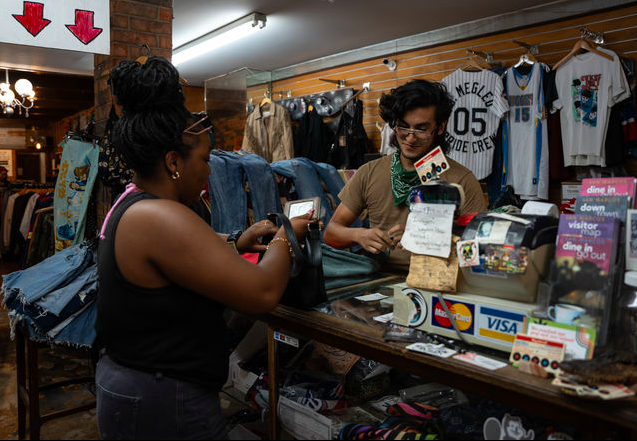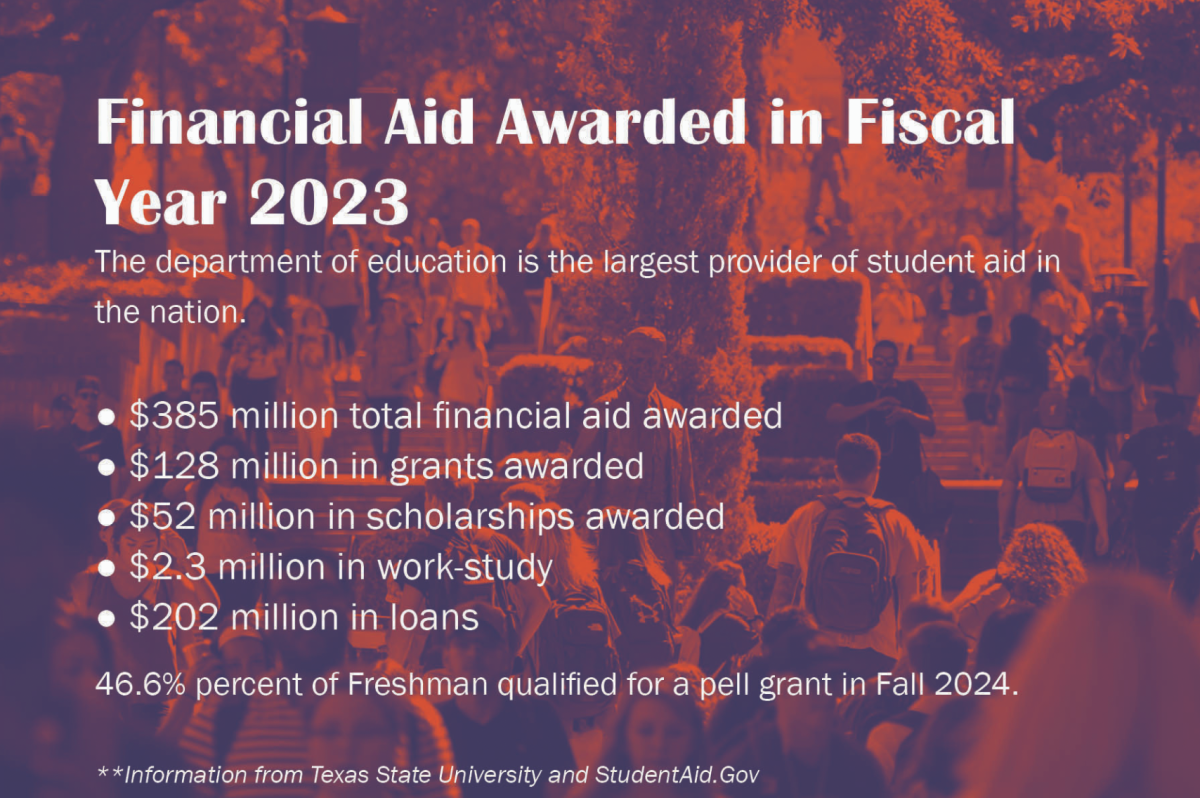Texas State students and the San Marcos community have started to notice the effects of inflation around them. For students, it’s getting gas or buying groceries. The rise in the cost of goods and services is on the forefront of business owners’ minds.
According to the U.S. Inflation Calculator, inflation has increased from 3.4% in July 2000 to 8.5% in July 2022. However, the federal minimum wage has not changed from $7.25 per hour since 2009.
Madison Weaver, a marketing junior, has felt the effects of inflation primarily through the rise in grocery prices.
“It used to be $85 max for me to eat for a week, now I spend about $100-$150,” Weaver said. “There’s no way I eat $150 worth of groceries; that’s where I see the most difference.”
Grocery prices began increasing over the last 12 months, the largest increase since March 1979. Items like milk, eggs and other dairy-related products continue to rise in price with a 16.2% increase according to the U.S. Bureau of Labor Statistics. Whereas other items like cereal and bakery products increased by 16.4% throughout the year.
This exemplifies that Weaver is not alone when it comes to her new grocery budget. What was once a distant concern is now a common sentiment among Texas State students and San Marcos residents.
Students like Weaver, who works as a server, explains that the tips she receives during the clock have translated greatly into her livelihood.
“Tips are where all my money comes from,” Weaver said. “That’s my main source of income, which I do have help from my parents, don’t get me wrong, but tips are all of my money. Servers don’t make much on the clock, but we make good money in tips.”
According to the National Low Income Housing Coalition’s annual Out of Reach report, the $7.25 minimum wage in the U.S. is insufficient to provide adequate housing for minimum wage workers. Any employee who works a full-time minimum wage job cannot afford a two-bedroom apartment in any state in the U.S. The same workers cannot afford a one-bedroom apartment in 93% of U.S. counties.
The increase translates into more than just groceries, the cost of healthcare and gasoline has also increased. On July of 2000, the average price of gasoline was $1.64 per gallon at an inflation rate of 32.9%. In July of 2022, the average price of gasoline per gallon is $4.76 at an inflation rate of 44%.
President Joe Biden’s Inflation Reduction Act, a more than $300 billion bill, was signed into law last month and aims to lower prescription drugs, health care costs and energy costs. It also guarantees anyone making $400,000 per year will not have a tax increase.
Mekhi Williams, a health science senior, who is a clerk at 7-Eleven, has noticed the increase in gas firsthand.
“Luckily, my car is pretty good on gas. But I see some people have older cars, bigger engines, and they’re paying $200 a week for gas,” Williams said. “One of my roommates, specifically, is paying that much.”
For local business owners, inflation has brought a time of reflection on the direction of their businesses and ideas of how to keep their doors open are a pressing matter.
David Mars, the owner of Vagabond vintage and thrift shop located on The Square, sheds light on the effects inflation has played on his business.
“My rent has gone up because property taxes have gone up. Where I source a lot of my merchandise has also gone up,” Mars said. “I haven’t had to flip that over to my customers because I’ll kind of just eat that for now, but eventually that’s going to translate into the prices customers are paying.”
Mars understands the majority of his clientele are college students and may not be in a financial position to spend large amounts of money on thrift clothes.
“I know I’m dealing with mostly college students, where everyone’s not a millionaire or has a trust fund,” Mars said. “I’m doing okay, but I’m going to have to translate that over to my customers probably within the next year.”
Although he has not made the adjustment yet in his own business, he has noticed the adjustments other businesses have been forced to make.
“It’s affecting everything. You see it with fast food chains and so on. I’ll go buy Wendy’s six months ago and I’m paying under $10, but it seems like a meal anywhere is more than $10 now,” Mars said.
Williams feels the rate of the rising cost of goods will be a constant throughout years to come.
“I don’t see it slowing down anytime soon, so I’m kind of just preparing for the worse,” Williams said.
Categories:
Inflation increase causes uncomfortable reflection in community
September 22, 2022
Texas State psychology junior Haleigh Johnson (left) purchases items from employee Benny Rice, Sunday, Sept. 18, 2022, at Vagabond.
0
Donate to The University Star
Your donation will support the student journalists of Texas State University. Your contribution will allow us to purchase equipment and cover our annual website hosting costs.
More to Discover









